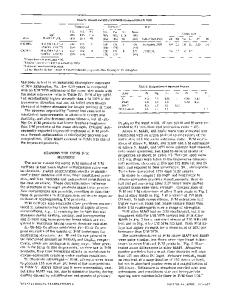Development and Processing of Novel Aluminum Powder Metallurgy Materials for Heat Sink Applications
- PDF / 610,613 Bytes
- 10 Pages / 593.972 x 792 pts Page_size
- 63 Downloads / 340 Views
ODUCTION
HISTORICALLY, the fabrication of heat sink devices has been accomplished through either casting or a wrought production approach.[1–6] Materials are generally selected by evaluating the thermal properties, formability, weight, and of course cost. Pure metals are inherently superior conductors of heat due to their ability to facilitate electrical charge carriers throughout their crystal structure.[7] In the case of solids, excitations in the form of particles (charge carriers) or waves (phonons) are what give rise to thermal conduction.[8] Therefore, metals exhibiting good electrical conductivity are also able of generating high levels of heat transfer. Factors that influence the thermal properties of metals include the presence of multiple phases within the material, elements in solid solution, porosity, and dislocation density.[9] Aluminum and copper are the most common heat sink materials due to a combination of good thermal properties and affordability. The largest application of heat sinks is in the cooling of electronics.[10–12] In automotive applications, however, aluminum is the clear choice as copper has a significantly higher density. L.J.B. SMITH, Graduate Student, S.F. CORBIN and DONALD PAUL BISHOP, Professors, are with the Materials Engineering, Dalhousie University, Halifax, NS, Canada. Contact e-mail: Paul. [email protected] R.L. HEXEMER JR., Research Engineer, is with the Advanced Engineering, GKN Sinter Metals LLC, Conover, NC. I.W. DONALDSON, Director, is with the R&D Auburn Hills Tech Center, Materials Engineering Americas, GKN Sinter Metals LLC, Auburn Hills, MI. Manuscript submitted April 12, 2013. Article published online September 25, 2013 980—VOLUME 45A, FEBRUARY 2014
Common aluminum alloys used in heat sinks are cast aluminum 390 and wrought 6063, which have nominal thermal conductivity values of 134 and 200 W/m K, respectively.[13] An emerging means of aluminum processing is powder metallurgy (PM) technology. Here, aluminum powder is blended with controlled alloying additions, compacted into a semi-dense ‘‘green’’ body, and then heated to sinter the particles into a coherent product.[14] This process allows for the production of components with an engineered geometry in a near-net-shape manner promoting a high material utilization rate (>95 pct) with the need for little to no machining. It also allows for precise control over chemical additions, as well as a more homogeneous dispersion of precipitates and aggregates than can typically be achieved when melting the constituents together.[15] This results in aluminum PM alloys that are competitive with comparable wrought alloys in terms of strength, fatigue, and elevated temperature stability.[16,17] As such, aluminum PM technology is now utilized in the manufacture of numerous automotive components in high annual volumes. Given the proven success of aluminum PM in scenarios that are dominated by mechanical property needs, it would seem logical that the near-net-shape advantages could also be leveraged in the manufacture of heat sink devices
Data Loading...











